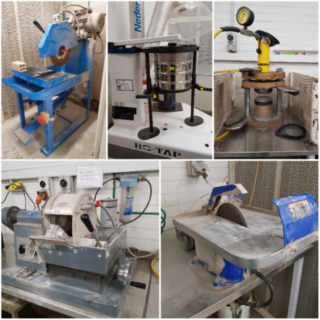SelFrag & Mineral Separation Facility
Selfrag & Mineral Separation Laboratory facilitates the sample preparation prior to characterisation and analysis of the mineral for both internal and external researchers. Processes involves disaggregation of rock or consolidated material samples using high voltage electrodynamic pulse fragmentation, along with downstream mineral separation processing to isolate mineral concentrates using dense media separation techniques followed by magnetic separation to deliver mineral concentrates, separates, or resin mounts for SHRIMP, LA-ICPMS, TIMA and SEM analytical techniques.
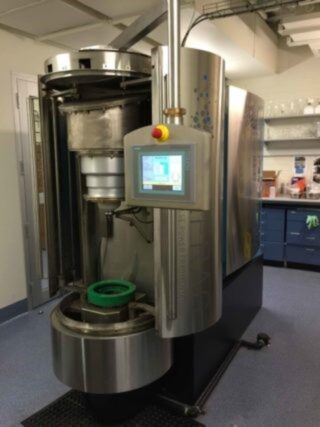
Selfrag Lab Unit
High voltage pulse power technology allows the liberation of morphologically intact minerals. Fracturing caused by the equipment is predominantly along grain boundaries and enables greater yields of undamaged mineral phases. Sample contamination is minimal as there is no abrasive contact with metals, since the process vessel can be disassembled and cleaned in between each sample, also wet process ensures zero dust production.
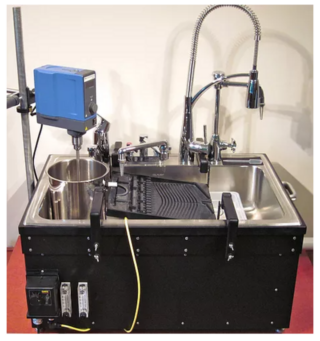
Heavy Minerals Concentrating Table
This advanced shaking table enables to capture small volumes of heavy fraction inside short grooves and simply holds the grains until the sample run has finished. The compact design allows for a smaller footprint, roughly one-tenth of the area of a typical gold table. It yields the heavy mineral concentrate to 75 – 80% and only 10-15 ml of total concentrate volume.
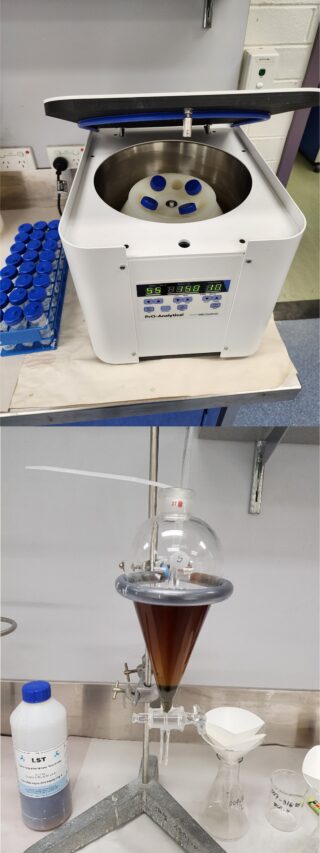
Dense Media Separation using Heavy Liquids
Heavy liquids such as LST (lithium heteropolytungstate) or SPT (sodium polytungstate) with higher densities are used to separate heavy mineral concentrates. Denser or heavier minerals in the sample sinks in the liquid while lighter fraction floats. For smaller volumes the centrifuge is used as a force gravity separation technique which leads to a sharp, distinct separation within a few minutes together with the partial freezing using Liquid Nitrogen. For larger volumes separatory funnels are used under normal gravity separation. Diiodomethane (MI) which has a very high density, is used to separate the heavy minerals which were part of the heavy fraction during LST or SPT treatment.
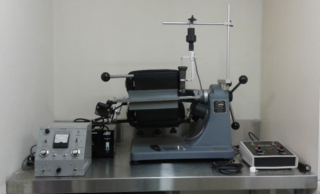
Frantz Magnetic Separator
Diamagnetic and paramagnetic minerals are separated via Frantz using different field intensities and tilt/slope settings. Ferromagnetic minerals are removed via a handheld magnet before they are sent through the magnetic separator. Paramagnetic minerals are attracted and diamagnetic minerals are repelled by an applied magnetic field.
These heavy mineral concentrates are then subjected to hand-picking, resin mount preparation, polishing and coating prior to value-adding using TIMA, SEM, SHRIMP and LA-ICP-MS analytical techniques.
Applications
The Facility supports a range of geochronological and geochemical applications such as:
- U-Pb Dating / Trace Element Analysis of Accessory Phases
- Fragmentation Analysis
- Pre-weakening of Ore Materials
- Purification of Industrial Products
The Rock Processing Facility offers a range of additional services; including Rock Saws (small & large), Rock Press, Sieving and Panning devices, and Mount Preparation devices.
